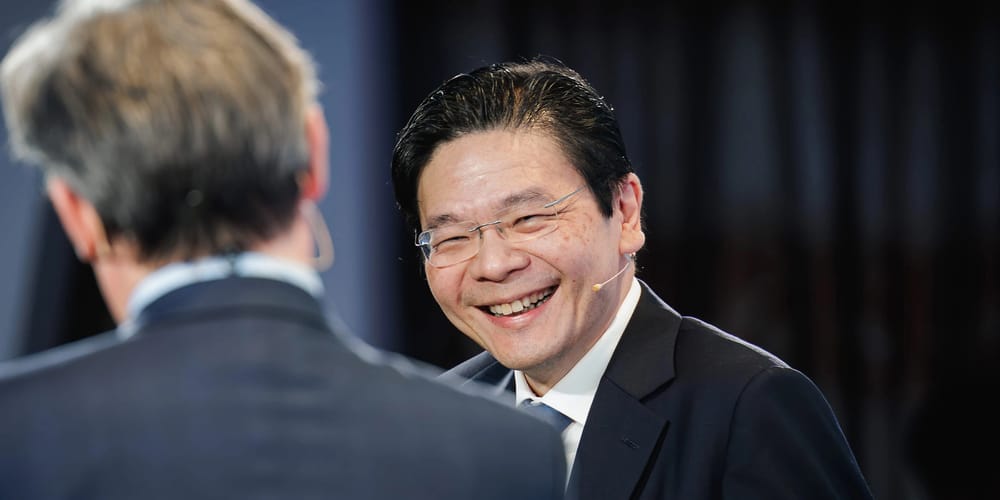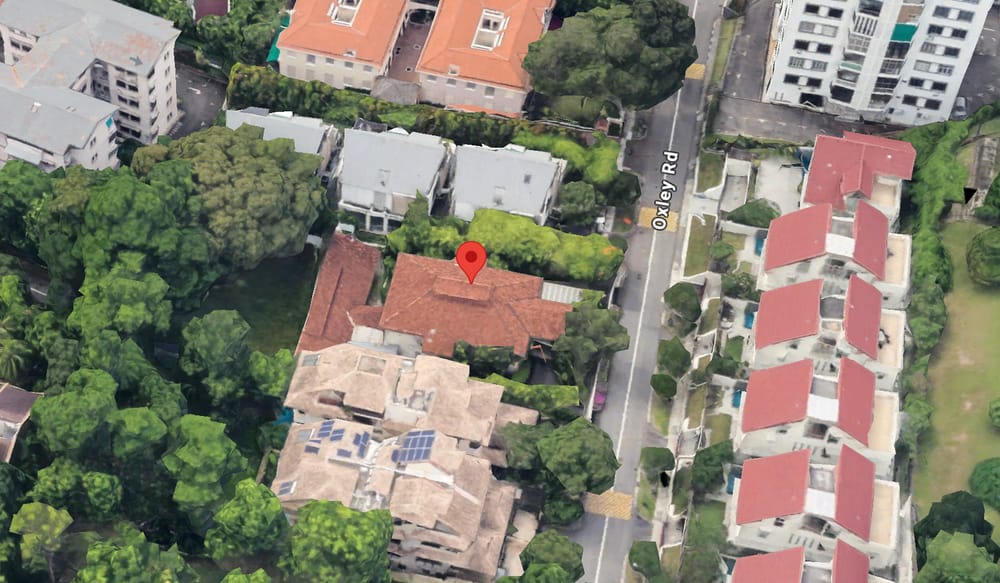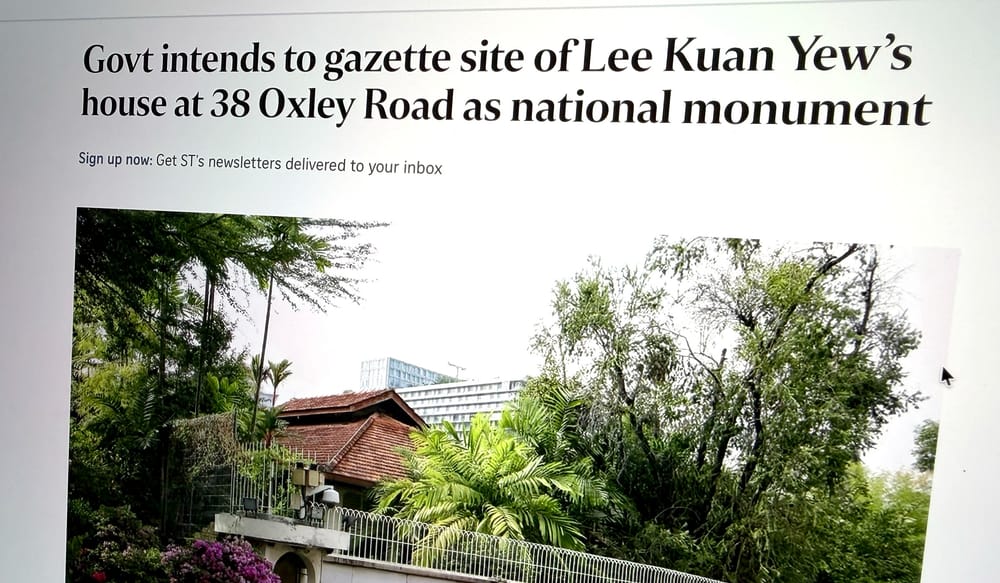It's been almost a year since Mahathir took back the reins of his country, inspiring hopes for a positive change after a decade under corrupt Najib.
Unfortunately, however, as months go by, he keeps indulging his old vices not only in the arena of foreign affairs but domestic politics as well - chiefly through his habits of using public investment projects to score political points rather than genuinely improve the country's infrastructure to serve its people - and its economy - in the best way possible.
And while some commentators have hastily applauded his latest announcement of a trimmed-down, cheaper ECRL project, it had taken just a few days before we learned its true price.
The real cost of the new ECRL
Original construction costs of the railway stood at about 66 billion RM and were widely dismissed by the new authorities as far too high - a sure sign of the irresponsibility of the previous administration. Mahathir ordered a suspension of the works and forced the Chinese contractor CCCC back to the table to lower the price of the project.
Finally, a week ago, it was announced that the new ECRL would cost only 44 billion RM. Naturally, the government boasted about its apparent success - but is it one?
The new alignment of ECRL is nearly 50km shorter, has 20 instead of 28 stations and goes around the mountains not through them.
So how much have the Chinese reduced their construction price by? Not much. The cut price has been achieved mainly by limiting the scope of work, not the contractor's margins:
- Tunnels through the Titiwangsa Range were to cost 10 billion RM
- 48km of tracks at about 68 million RM per kilometre add up to over 3 billion RM
- 8 stations axed from the project would easily cost several hundred million RM - potentially in the range of 1-2 billion RM in total, depending on their specification
Put that together and we're already arriving at about 15 out of the 22 billion supposedly "saved" - and we do not know the full extent of other changes regarding construction materials, tunnelling and bridging works or quality standards.
It is cheaper because it has been scaled down - much like Proton is cheaper than Toyota because it's far worse a car.
In other words, the Chinese have not exactly budged much, possibly reducing their price by less than ten per cent (if that), while also receiving a 50% stake in managing the railway and - most importantly - as we learned just this week, a revival of a massive Bandar Malaysia project they have a stake in.
On the whole, then, it looks like they're going to make more money, not less.
Perhaps it wouldn't matter much if the railway still fulfilled its goals. But will it?
Most notably - and bizarrely - this major intercity connection is not going to reach the nation's capital but, instead, pass through Putrajaya - some 30-40 kilometres away from Kuala Lumpur - where commuters will have to board the new MRT2 line and spend another hour travelling to the city.
Under the original alignment, passenger trains would have their terminus at the existing Gombak LRT station and follow a more direct - and faster - route through the mountains, rather than around them, south of KL. The line was also supposed to have a branch and a major station at Kuantan Sentral, allowing easy access to passenger trains. Instead, people will have to travel out of the city to board them.
The main incentive to leave cars at home and switch to public transit is a considerably shorter travel time - if that is no longer the case, who is going to take the train?
The new railway should be a long-distance alternative to cars or even planes but has now been reduced to - at best - a short-distance hop-on / hop-off connection for passengers commuting between cities on the line. Certainly, it is not a major link allowing them to travel quickly to KL.
It may be cheaper - but it is also a lot less convenient and its completion will be delayed by 2 years. With fewer stations and longer travel time to Kuala Lumpur, the updated ECRL misses critical opportunities.
Egonomics
So, why, you may ask, has Malaysian administration gone through so much trouble to arrive at a design that is much less desirable and likely to be less successful?
The answer is quite simple - Mahathir wanted to score political points and needed "proof" that his narrative about irresponsible and overspending administration of Najib was true.
He couldn't just have executed what his predecessor signed. He feels he has to show that everything that Najib devised is wrong and the new government is going to fix it now. His political posture - and his ego - drive his actions.
But the Chinese saw through it and squeezed him. They have barely reduced real construction costs and likely pressured him to give them new deals in return. And so Bandar Malaysia - which Najib axed in 2017 - was revived.
Mahathir's bet is that few people will delve into the details, and most are only going to notice the reduced cost of ECRL. Whether the new design is equally useful or valuable in the long run does not matter to him.
He is neither leading nor managing Malaysia - he is playing political games with his foreign and domestic rivals and his main objective is scoring points against them to inflate his position and feeling of self-importance, not achieve meaningful progress that would really benefit the people.
White elephants
Just a few days ago, Malaysian officials tried to alleviate some of the concerns about having a railway connection 30 kilometres away from KL, painting Putrajaya as a future transport hub - surely a laughable prospect to anybody who has ever set foot in the city. While maybe not as eerily deserted as the Burmese ghost capital of Naypyidaw, its broad streets and pompous buildings are mainly inhabited and used by the members of the administration.
The last thing Malaysia needs at the moment is a transport hub in Putrajaya, while Kuala Lumpur is suffocating, stuck in horrific jams nearly every single day. But Putrajaya does have its uses - it serves as a perfect illustration of how Dr. Mahathir's infrastructural investments often end.
I have to say that when I began reading about his newfound frugality, I was rather amused, since I can't recall any evidence that he was ever responsible with money - or had any sound economic vision for the country.
Apart from the obvious infrastructural projects like a few main highways or the international airport, his investments have not only proved to be expensive failures but betrayed delusions of grandeur.
It sounds rather comical when he talks about responsible spending or investment in national rail transit while he spent the 1990s wasting tens of billions of ringgit on ludicrous vanity projects that remain a drag on the country even today.
His actions have never shown any signs of consideration for improvement of the status quo. Instead, he either appeared to have rejected it, as if trying to will it out of existence or imposed himself on it. Inordinate sums were wasted on pompous planned cities in Putrajaya or Cyberjaya, on the race track in Sepang, on the delusion of developing a national car or Petronas Towers.
Everything he did had to be grand in appearance - not necessarily in substance.
In the south, he wanted to spite Singapore by building a new port - Tanjung Pelepas - and succeeded in luring away Danish container giant Maersk (which saw an opportunity for a bargain with desperate Malaysians). Yet after 20 years, it's more a competition to other Malaysian harbours than it is to its neighbour.
In the meanwhile, badly needed but far less glamorous public transit suffered woeful underinvestment. Nation's narrow gauge railways remained backward, offering poor service on rickety trains lazily rolling through the country, hardly ever on time. Kuala Lumpur received limited light rail connections and a short monorail (which has never been fully completed) while billions were poured into civilizing swamps and jungles 30 kilometres away. Putrajaya boasts broad boulevards nobody uses, and it's still hard to walk around KL on its broken sidewalks, often leading to nowhere.
It's as if Mahathir always wanted to erase or ignore the unflattering reality and start from scratch, indulging fantasies of neatly planned cities with clean streets and 21st century landmarks, filled with people owning Protons and Peroduas - all built by Malaysian companies with Malaysian money, using Malaysian resources. Utopian autarky that he dreams of conjuring into being.
His return to power brought some hope that, perhaps, after 15 years on the sidelines, a 3rd person perspective has helped him learn from past mistakes. Sadly, it turned out to be business as usual. Desperately needed MRT projects in KL have been scaled down or shelved. Ludicrous ideas of yet another national car (including a flying one) have resurfaced. Formula 1 is set to make an expensive comeback to the country, and Dr. M's dearest child - his administrative capital in Putrajaya - is back in focus, set to serve as a gateway to Kuala Lumpur.
It's as if he is filtering the country's affairs through himself - not only every decision but also everything he inherited returning to office has to bear his mark. Whatever he believes should be true is being forced to be true, regardless of the facts.
Active projects get suspended or cancelled, axed projects get revived - even international borders get redrawn - Mahathir has a hand in it all, regardless of the outcome.
It doesn't matter what's good for Malaysia as long as it's his Malaysia.









